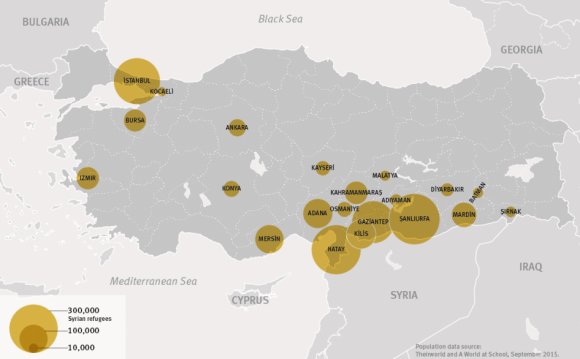
- Adult literacy rate > Total: Person literacy price could be the portion of individuals many years 15 and above who is able to, with comprehension, look over and write a short, quick declaration on their everyday life."
- Typical years of education of grownups: Normal several years of schooling of grownups may be the years of formal education received, normally, by adults over age 15. (Data Source: Barro-Lee information Set
- Kids out-of-school, major: Children out-of-school, main. Out-of-school children of major school-age. Complete may be the final amount of primary-school-age children who are not signed up for either main or secondary schools.
- Children out-of-school, major per 1000: Children out of school, primary. Out-of-school kids of primary school age. Total may be the total number of primary-school-age young ones who aren't enrolled in either major or secondary schools. Figures indicated per thousand populace for the same 12 months.
- Young ones out-of-school, major, feminine: Kids out-of-school, main, female. Out-of-school kiddies of primary school age. Female is the final number of feminine primary-school-age kids who aren't enrolled in either major or secondary schools.
- College and college > Share of total training investing: Percentage of federal government education investment that visits post-secondary knowledge.
- Compulsary education duration: period of time students must be enrolled in school for many degrees of training. By way of example, compulsary knowledge can last for 12 many years in the us.
- Government paying for training > Proportion of GDP: Percentage of general public funding for knowledge from nation's total GDP.
- Literacy > Female: This entry includes a concept of literacy and Census Bureau percentages for the total populace, men, and females. There are not any universal meanings and criteria of literacy. Unless usually specified, all prices derive from the most common definition - the capacity to read and write at a specified age. Detailing the requirements that individual nations used to gauge the power to review and compose is beyond the range of our supply. Information on literacy, whilst not an amazing measure of academic results, has become the most easily available and valid for intercontinental comparisons.
- Literacy > complete populace: This entry includes a definition of literacy and Census Bureau percentages for complete population, males, and females. There aren't any universal meanings and standards of literacy. Unless usually specified, all rates are derived from the most typical definition - the ability to review and write at a specified age. Detailing the standards that each nations use to gauge the capacity to review and compose is beyond the scope of our source. Information about literacy, while not a perfect measure of academic outcomes, is just about the many common and legitimate for worldwide reviews.
- Main training, extent > Years: Major education, period (years). Duration of primary could be the number of grades (years) in primary education.
- Major knowledge, instructors per 1000: Main education, teachers. Training staff in major. Public and private. Comprehensive and part-time. All programmes. Total is the final number of teachers in public and personal main training organizations. Educators tend to be persons employed fulltime or in your free time in the state capacity to guide and direct the educational connection with students and pupils, regardless of their particular qualifications or even the delivery system, in other words. face-to-face and/or far away. This definition excludes academic workers who possess no active training tasks (e.g. headmasters, headmistresses or principals that do not instruct) and persons whom work sometimes or in a voluntary ability in academic establishments. Numbers expressed per thousand populace for the same 12 months.
- Pupil-teacher ratio, primary: Pupil-teacher ratio, major. Pupil-teacher ratio. Main could be the wide range of pupils signed up for primary college split by the few major school teachers.
- Pupil-teacher ratio, additional: Pupil-teacher proportion, secondary. Pupil-teacher ratio. Secondary may be the number of students enrolled in additional college split because of the wide range of additional college teachers.
- Additional knowledge, length of time > Years: Additional knowledge, length (years). Duration of additional knowledge is the quantity of grades (years) in secondary training (ISCED 2 & 3).
SOURCES: un Educational, Scientific, and Cultural Organisation (UNESCO) Institute for Statistics.; UNESCO; UNESCO Institute for Statistics; UNESCO Institute for Statistics. Population numbers from World Bank: (1) un Population Division. World Population Prospects, (2) Us Statistical Division. Population and Crucial Statistics Report (various many years), (3) Census reports alongside statistical publications from national analytical workplaces, (4) Eurostat: Demographic Statistics, (5) Secretariat of this Pacific Community: Statistics and Demography Programme, and (6) U.S. Census Bureau: Overseas Database.; UNESCO Institute for Statistics. Source tables; UNESCO Institute for Statistics. Supply tables; UNESCO Institute for Statistics. Origin tables; CIA World Factbooks 18 December 2003 to 28 March 2011; UNESCO Institute for Statistics. Population figures from World Bank: (1) us Population Division. World Population Leads, (2) United Nations Statistical Division. Population and Vital Statistics Report (various many years), (3) Census reports alongside statistical magazines from national analytical offices, (4) Eurostat: Demographic Statistics, (5) Secretariat of the Pacific Community: Statistics and Demography Programme, and (6) U.S. Census Bureau: International Database.
Citation
"Chicken Knowledge Stats", NationMaster. Retrieved from
"Turkey Education Stats, NationMaster." 1970-2014. .
'chicken knowledge Stats, NationMaster', [assessed 1970-2014]
"Turkey Knowledge Stats", NationMaster [Internet]. 1970-2014. Avaliable from: .
"Chicken Knowledge Stats", NationMaster. Avaliable at: nationmaster.com. Assessed 1970-2014.
"Turkey knowledge Stats, NationMaster, " (assessed 1970-2014)
RELATED VIDEO











